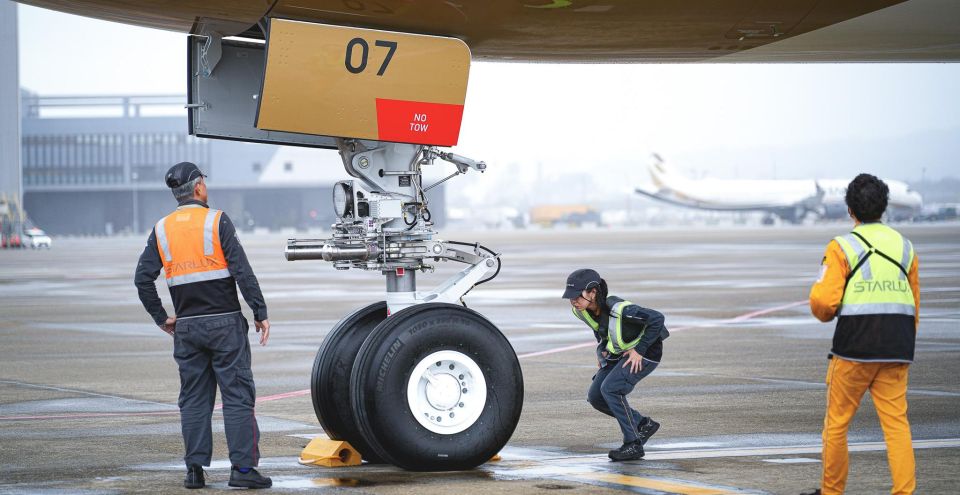
Greenhouse Gas (GHG) Management
In 2024, STARLUX Airlines completed its first greenhouse gas (GHG) inventory for 2023 in accordance with ISO 14064-1:2018, obtaining third-party verification in May 2024. The 2024 inventory further expanded to include 10 international subsidiaries and operational sites, covering Japan, North America, Indonesia, Hong Kong, Thailand, Malaysia, the Philippines, Vietnam, Singapore, and Macau, all verified by a third party. Moving forward, annual GHG inventories will continue to strengthen corporate carbon management.
The total GHG emissions for 2024 amounted to 991,424.08 tCO₂e:
-
Scope 1 – Direct Emissions: 98.19%, primarily from aircraft operations
-
Scope 2 – Energy Indirect Emissions: 0.81%, mainly from electricity consumption at operational sites
-
Scope 3 – Transportation Indirect Emissions & Scope 4 – Organizational Product Use: 1.00%
Compared to the previous year, STARLUX Airlines’ carbon emissions increased by 65%, mainly due to the continued expansion of its aircraft fleet. Ongoing routine GHG inventories will track progress toward short-, medium-, and long-term emission reduction targets, contributing to global carbon reduction efforts.
Key Greenhouse Gas Emissions Statistics and Intensity
| Category | 2022 | 2023 | 2024 | |
|---|---|---|---|---|
| Scope 1 | Aircraft Direct Emissions | 136,248 | 587,117 | 970,048 |
| Non-Aircraft Direct Emissions | — | 2,739 | 3,447 | |
| Scope 2 | 4,809 | 6,594 | 8,039 | |
|
Scope 3 (Transportation, Organizational Product Use, Product Usage, Other Indirect Emissions) |
— | 4,290 | 9,888 | |
- Inventory Scope Expansion: From 2022 to 2023, the GHG inventory covered the Taiwan headquarters and its main operational sites. In 2024, the scope expanded to include global operational sites, including newly added offices in Taiwan and 10 overseas subsidiaries and their operational locations.
-
GHG Types: The inventory covers seven greenhouse gases: Carbon Dioxide (CO₂), Methane (CH₄), Nitrous Oxide (N₂O), Hydrofluorocarbons (HFCs), Perfluorocarbons (PFCs), Sulfur Hexafluoride (SF₆), and Nitrogen Trifluoride (NF₃).
-
Inventory Methodology: The operational control approach was used for the GHG inventory.
-
Emission Factors: Emission factors are referenced from the Ministry of Environment’s 2024 announcement of GHG emission factors and the Product Carbon Footprint Information Platform.
-
Historical Verification: In 2023, in accordance with the CORSIA program, STARLUX completed the 2022 aviation fuel verification. In 2024, following ISO 14064-1:2018, the 2023 GHG inventory was completed. Therefore, 2022 GHG data only covered CORSIA aviation fuel verification and preliminary estimates of non-CORSIA aircraft fuel and purchased electricity at operational sites.
-
Scope 3–6 Coverage (2024): Includes upstream emissions from purchased energy in the value chain, employee commuting, business travel, and other sources of GHG emissions.
GHG Emissions 101:
-
Scope 1 – Direct GHG Emissions: Emissions directly generated from processes or facilities, such as emissions from raw materials, fuel consumption by vehicles, and refrigerant leaks from air conditioning or water systems.
-
Scope 2 – Energy Indirect GHG Emissions: Indirect emissions resulting from the use of purchased electricity or steam.
-
Scope 3 – Other Indirect GHG Emissions: Emissions generated by business activities that are not owned or directly controlled by the organization, such as employee commuting and business travel.



__25H28kHxLa.jpg)





